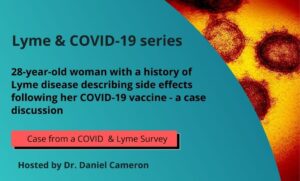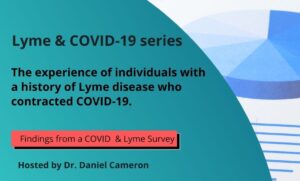Call for your appointment today 914-666-4665 | Mt. Kisco, New York

POTS symptoms have been identified in a group of patients following COVID-19. POTS typically occurs “after viral or bacterial infections, such as Epstein-Barr virus, influenza, and Borrelia burgdorferi infection, [the causative agent of Lyme disease],” explains Blitshteyn and Whitelaw. Or, they add, it can be triggered by surgery, pregnancy, or a concussion.
The patients evaluated at their Dysautonomia Clinic had evidence of orthostatic intolerance (OI) based on a 10-minute stand test or tilt table test. The study included individuals with presumed COVID-19, instead of only laboratory-confirmed COVID-19 cases.
READ MORE: What exactly is POTS?
Out of the 20 study participants, 6 had pre-existing minor autonomic symptoms, such as occasional dizziness, syncope, or palpitations, and 4 had a remote history of concussion.
But, the authors note, “Prior to COVID-19, none had chronic OI, and all patients were fully functional and employed.”
After resolution of the COVID-19 infection, “most patients experienced fatigue, postural tachycardia, OI, dizziness, and exercise intolerance that were chronic and disabling.”¹
Six patients had mild abnormalities on cardiac or pulmonary testing. Four patients had elevated markers of autoimmunity and/or inflammation.
Less common symptoms consisted of hypersomnolence panic attacks, anosmia, ageusia, headaches, neuropathic pain, hypertension, chest tightness, recurrent fevers, weight loss, diarrhea, and oxygen desaturation. (Note: The authors did not comment as to whether the less common symptoms might be due to autonomic issues.)
“Most patients (85%) self-reported residual symptoms 6 – 8 months after COVID-19, although many felt that they had improved with treatment.”¹
According to the authors, 16 (80%) out of the 20 patients were treated with pharmacotherapy. This included beta blockers, fludrocortisone, midodrine, ivabradine, and other medications prescribed for comorbid conditions, such as headaches, neuropathic pain, or allergic symptoms associated with mast cell activation disorder.
Only 3 patients with autonomic dysfunction recovered. “Most patients (85%) self-reported residual symptoms 6 – 8 months after COVID-19, although many felt that they had improved with treatment,” the authors write.
Eight patients were able to work part- or full-time.
Some patients had a pre-existing history of minor autonomic symptoms or a concussion that could have contributed to the post-COVID-19 autonomic disorders. Four of the subjects had a remote history of a concussion.
Authors Conclude:
- “In this largest case series to date, we found that POTS and other common autonomic disorders can follow COVID-19 in previously healthy non-hospitalized patients who experience significant disability 6–8 months after an acute infection.”
- “… nearly a third of the patients in this case series had confirmed mild abnormalities on cardiac or pulmonary testing, and 20% had abnormal markers of autoimmunity or inflammation, which suggests that patients with persistent cardiovascular and neurologic symptoms after COVID-19 may have an underlying autoimmune and/or inflammatory process that affects cardiopulmonary, neurologic, and immunologic systems.”
- “Further studies are needed to determine whether post-COVID-19 autonomic disorders are rooted in autoimmunity and what type of antibodies or cytokines may be mediating the autoimmune and/or inflammatory process.”
Related Articles:
POTS patients with brain fog have neurocognitive deficits
POTS: An autonomic disorder in Lyme disease patients
Could POTS and Lyme disease patients suffer impaired cognitive function when standing?
References:
- Blitshteyn S, Whitelaw S. Postural orthostatic tachycardia syndrome (POTS) and other autonomic disorders after COVID-19 infection: a case series of 20 patients. Immunol Res. Apr 2021;69(2):205-211. doi:10.1007/s12026-021-09185-5



